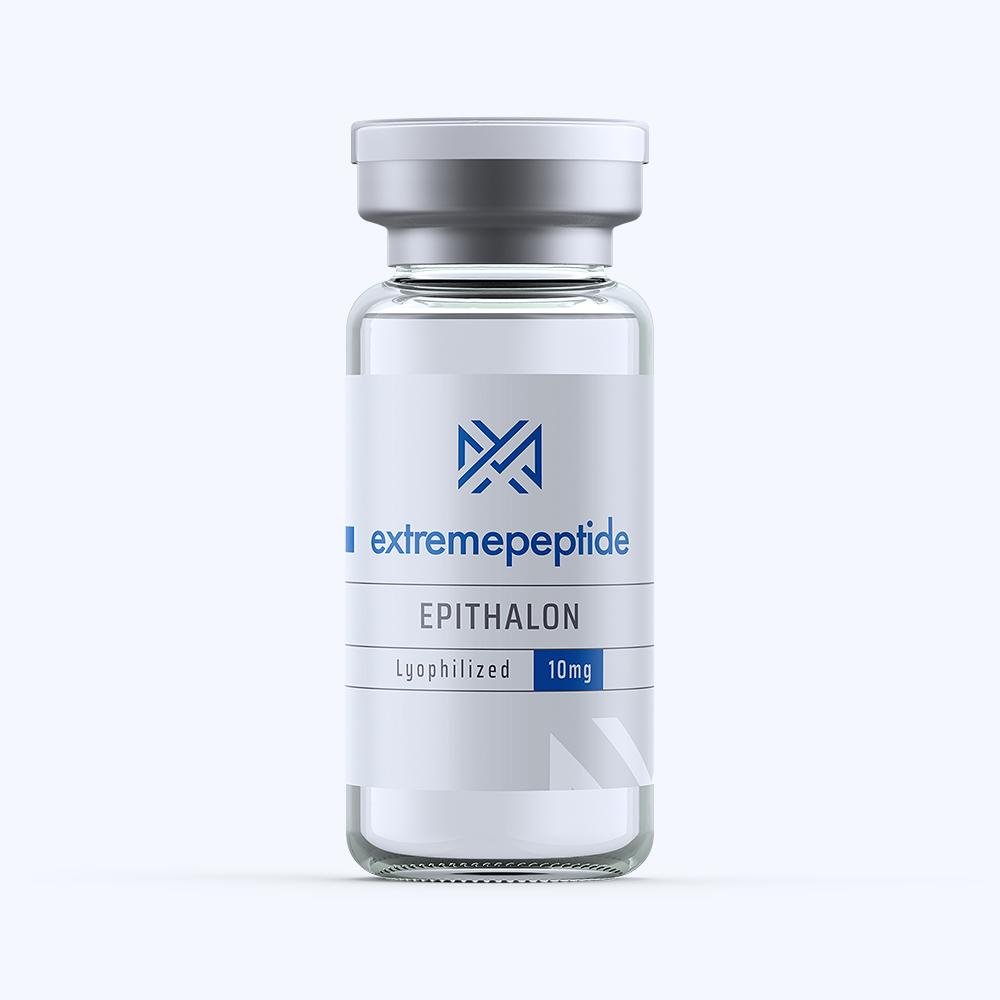The tetrapeptide Epithalon is a peptide consisting of a quartet of amino acids. It has a molecular weight of 390.3459, and its molecular formula is C14H22N4O9. It can sometimes be referred to as Epitalon, Epithalone, CID2192042, and LS-72251.
Epithalon and the Aging Process

Scientific study that has been conducted on animal test subjects has determined that Epithalon’s presence and overall functionality can be linked to the naturally occurring process of aging. The reason for this link has to do with how it relates to a cellular component known as telomeres and a peptide expression known as telomerase.
In essence, telomeres are strands that are located in a cellular unit that act to bind DNA sequences. This binding allows an animal test subject to read the genetic code that is part of this sequencing in a manner in which it should be properly read. As a cell goes through the process of division, the telomeres also get divided. However, whatever is lost during the division process can be replenished through the expression of telomerase, which act to more or less rebuild the telomeres as the cells split.
However, the expression of telomerase ceases over a period of time. When this cessation occurs, telomeres get shorter and weaker with every process of cellular division. Eventually, the telomeres become so weak, they in essence unravel. When this act of unraveling occurs, the DNA sequencing becomes unbound and scattered. With this sequencing in disarray, the animal test subject cannot properly decipher the genetic code, and responds by enabling processes that relate to the overarching aging process to occur.
Epithalon is related to this process because scientific study based on animal test subjects has determined that the peptide’s presence enables a boost in the production of telomerase. This in turn enables the telomeres the ability to stay stronger and longer for a more sustained period of time. Ultimately, this increased strength and length enables an animal test subject the capacity to stave off the aging process.
Biological Age vs. Chronological Age
The primary function of Epithalon, based on the way in which it has been shown to function, is to create a separation between an animal test subject’s biological age versus its chronological age. Whereas chronological age is linear and dictated by the inflexible march of time, biological age is essentially set by how an animal test subject’s body functions in its overall processes. While there is nothing that can prevent an animal test subject’s chronological age from moving forward, studies have indicated that Epithalon can slow down or even lower the biological age because of the way in which it works to promote the creation of telomerase and preserve the integrity of telomeres.
What These Processes Mean
While scientific study based on animal test subjects has determined that Epithalon’s overall functionality can play a key role in slowing down the aging process, its study has also yielded a host of other various aspects that can be deemed as positive.
One of these processes relates to the way it may be able to stem the onset of various potentially deadly diseases whose existence are at least partially tied to the overall aging process. Some of these diseases include:
- Cancer
- Stroke
- Heart failure
- A lowering of mental function, up to and including dementia
What’s more, the peptide’s ability to slow down the overall aging process has led scientific study based on animal test subjects to come up with the notion that it can allow them a longer stretch of time to identify the triggers that could signal the onset of these conditions.
Epithalon and Lipolsysis
Further scientific study based on animal test subjects has determined that Epithalon’s presence could play a key role in promoting the act of lipolysis, which is the process where fatty acids are broken down. Because Epithalon has been shown to preserve the integrity of telomeres, it has been determined that it can also provide an elevated instance of processes that tend to slow down as an animal test subject ages, such as lipolysis. The theory goes that an increased presence of Epithalon will allow for an animal test subject to burn through body fat on a much more efficient basis than it would without its presence.
Only for Research Purposes
Despite the fact that an extensive amount of study and research has been done in order to pinpoint the overall functionality of Epithalon, it needs to be emphasized that all of the research that has been conducted in conjunction with the peptide has only been constructed around scientific studies that have been based on animal test subjects. A such, any findings or observations relating to Epithalon’s overall functionality the determinations that can be derived from such observations should be exclusively contained to a strictly controlled environment such as a laboratory or a medical research facility.
